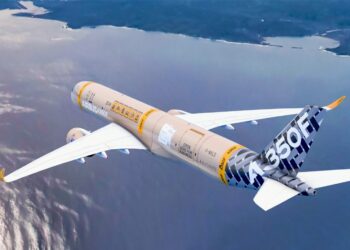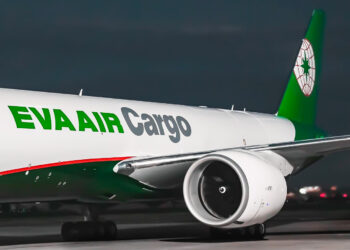No products in the cart.
China promotes the development of all-cargo airlines

In a recent CAAC policy announcement seen by Cargo Facts, the Civil Aviation Administration of China announced radical changes to the way it approves and regulates new startup airlines – changes that Cargo Facts believes will promote the development of a greater number of larger all-cargo carriers like SF Express Airlines.
Cargo airlines and regional carriers both lag behind mainline passenger airlines in terms of development, according to the CAAC, and as such receive the most attention in the new policy goals summed up below:
- to increase safety by reducing the strain on CAAC and industry resources and on larger airports such as Beijing Capital and Shanghai Pu Dong
- to promote regional passenger, and dedicated cargo carriers,
- to create a market for/promote the use of domestically produced regional aircraft
China’s air-transport sector is becoming increasingly fragmented, and, realizing that the goal is quality capacity rather than more airlines, the CAAC wants that fragmentation reduced. Between 2011-2015 (during the communist party’s twelfth five-year plan) the CAAC approved 20 new airlines, some of which it admits are “not strong, and not large.” At present the country has 57 airlines, six of which are dedicated cargo carriers. In total, about 2800 aircraft are in service with all of China’s airlines. By 2020 (during the thirteenth five-year plan) that number is expected to hit 4500. It is important to note however, that many of these newly-inducted aircraft will not be Airbus and Boeing models, but rather homegrown COMAC “ARJ” and AVIC “MA” series regional aircraft. The policy announcement specifically states that a major goal is “to encourage investors to use regional aircraft, especially domestically produced aircraft.”
The CAAC hopes to put an end to a popular loophole which previously allowed mainline passenger carriers to suddenly grow out of cargo or regional aircraft operators in their nascent stages of development. Instead airlines will be required to streamline their operations until they reach a defined scale. Dedicated cargo carriers must now operate at least 20 aircraft, and log an average of 2400 monthly flight hours before adding mainline aircraft. Similarly, regional carriers must have 25 aircraft flying at least 3000 hours a month before up-gauging to larger aircraft.
Although the CAAC did not release a concrete number regarding how many startups will be approved each year, it seemingly welcomes qualified cargo and regional startups in underserved regions of the country by limiting the number of airlines allowed to be based at a particular airport. A maximum of three airlines may be “home-based” at an airport which handles 10 – 30 million passengers per annum, four at airports with annual traffic of 30 – 50 million and five at airports with traffic above 50 million. Our interpretation of this restriction is not so much that the CAAC believes every small airport should have three locally-based airlines, but rather that larger airports such as Shanghai Pu Dong, Guangzhou Baiyun, and Beijing Capital are not in need of additional start-ups.
Interested in learning more about growing and emerging cargo airlines in China and beyond? We encourage you to join us at the Cargo Facts Symposium in Miami, 10 – 12 October, where senior executives from major carriers will speak on a panel dedicated to this topic. To register, or for more information, go to CargoFactsSymposium.com.




